From the authoritative rush you get from looking out from one of the towers to the possibility of something unexpected that comes with turning each corner inside the walls, castles are fun to explore.
And are usually an excellent way to learn more about the history of where they stand.
Luckily for visitors to Lisbon, São Jorge Castle is one of the most interesting you can visit in Portugal’s capital.
Lisbon Castle
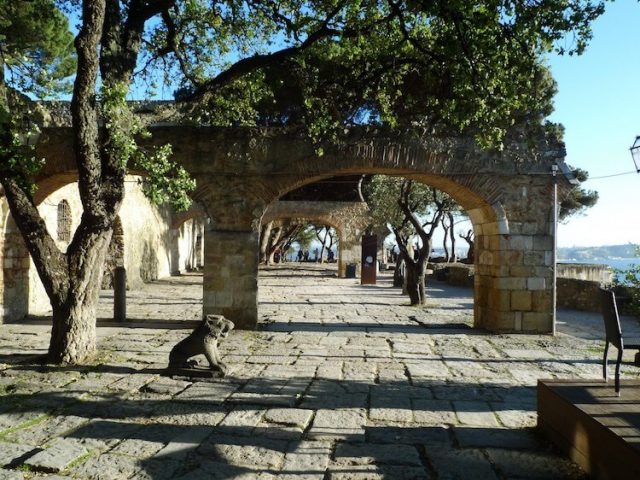
The Lisbon castle stands magnificently above the city center. It has been there as a symbol of ancient power for over 400 years.
Although much of the present castle dates from the 1920s, when a large restoration project took place, the structure maintained all its allure. It has no shortage of stories to tell.
In addition to being one of Lisbon’s most important landmarks, visible both day and night from large swaths of the city, the São Jorge Castle is also a great place to get a look at the city from above.
It stands proudly on top of Lisbon’s highest hill, which also shares its name. São Jorge hill provides fantastic views of the Baixa district and the Tagus River.
The castle is also nestled within two of Lisbon’s hillside neighborhoods, Alfama and Castelo. Naturally, a view from on high usually means exerting a little effort.
However, the São Jorge Castle is definitely worth visiting, and there are some public transport options below. These can help make the journey more manageable during the hot summer months.
Embark on a 3-hour tour guided tour around Alfama and the São Jorge Castle. Only €18 per person with Get Your Guide.
São Jorge castle facts
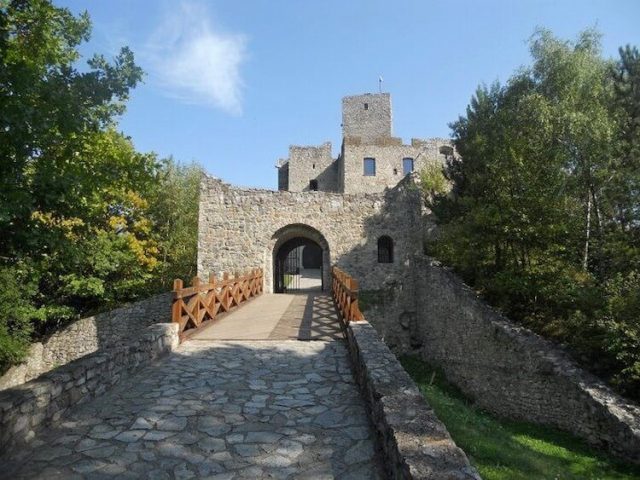
- As you’ll discover for yourself once you have made the climb, the brilliant vantage point of São Jorge Castle, high above the River Tejo, has made it a prime defensive position since the Roman era.
- There has been significant reconstruction. However, the layout that you’ll be exploring when you visit the castle today is still consistent with what was built in the 11th century.
- Before 1147, Lisbon was an important Moorish trading port with strong ties to North African heartland. Until Christianity was introduced to Portugal as part of the second crusade.
- If we want to go back even a little bit further, although there isn’t much evidence of it remaining today, there was actually a small fortress built by the Visigoths on the site during the fifth century.
- It was modified and enlarged by the Moors in the mid-eleventh century. That also happened during the reign of Afonso I of Portugal (1109 – 1185).
- It was later expanded and eventually and transformed into a Royal Palace.
- The restoration that stands there currently was completed in 1938.
- Even if certainly fascinating in its current condition, the São Jorge Castle was at the peak of its grandeur during the thirteenth and up until about the sixteenth century, when it was occupied by both the Kings of Portugal and the Bishop.
- That being said, the São Jorge Castle is still revealing its mysteries to contemporary archeologists. It was only a few years ago that Phoenician, Greek and Carthaginian ruins were found in the area. They are currently being uncovered.
How to get to the São Jorge Castle
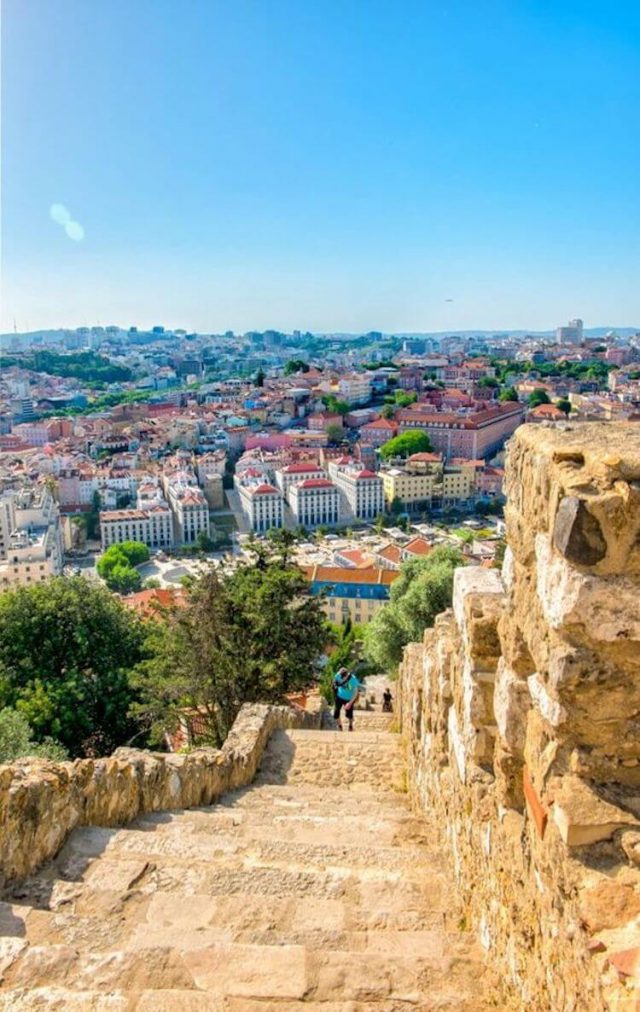
If you’re going to make the trek up to the castle, be sure that you leave yourself adequate time to properly explore all that it has to offer.
A visit to São Jorge Castle will take most of the morning or afternoon. This is because there is plenty to see on the fairly extensive site.
There are eleven towers. Each offers a unique and worthwhile viewpoint, in addition to a small museum, beautiful grounds, and a little bar and a restaurant.
Both trams 28 and 12 pass nearby. Bus 737 from Praça Da Figueira goes all the way to the castle. You can also take the Castillo Elevator, it’s free and it will take you to Rua Madalena, from there walk to the nearby Pingo Doce Supermarket, there’s another elevator there which will take you to the base of the castle.
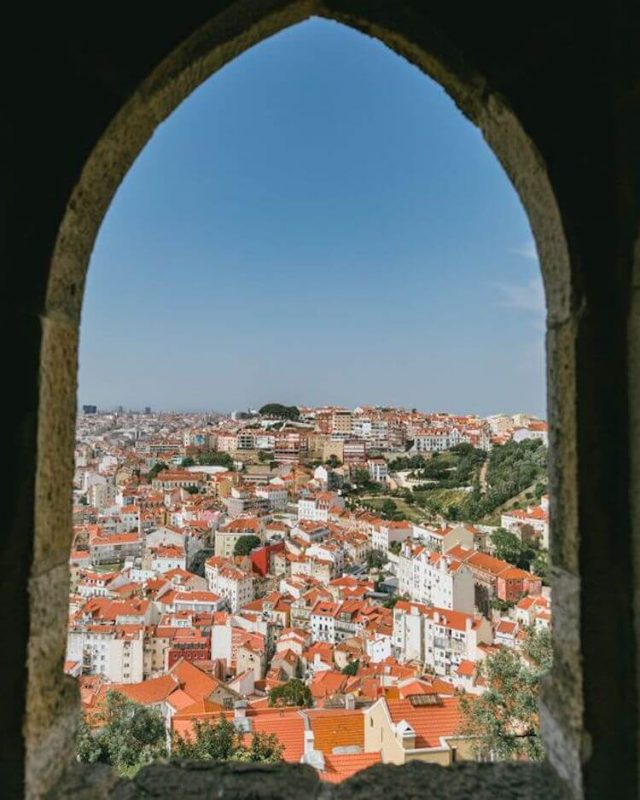
Once you get to the top, you’ll be rewarded with the most memorable views of the east part of Lisbon. There you’ll be able to snap some great shots and enjoy sweeping views of the Portuguese capital.
After visiting the castle, you’ll also want to spend some time exploring the surrounding streets and the other sights that call the São Jorge Hill home, including the Lisbon Cathedral.
Lisbon castle prices
Now that you’re eager to go explore, here’s a breakdown of how it works.
The ticket price is €8.50 for adults, €5 for students, and free for children under 10. If you’re traveling with the whole crew, consider the family ticket which costs €20 and allows entry for two adults and two children (<18). Children under 12 years of age and Lisbon residents do not pay entrance.
Lisbon castle opening hours
The opening hours are 9:00- 21:00 (Mar-Oct) and 9:00-18:00 (Nov-Feb). The last admission is 30 minutes before closing time. However, you should ideally give yourself at least an hour to enjoy a proper visit.
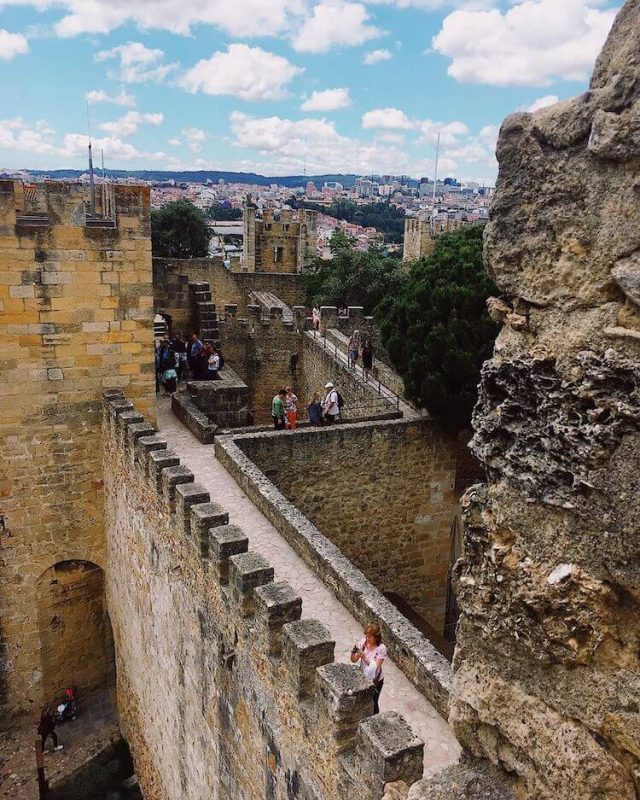
Be aware that the São Jorge Castle is definitely on most tourist’s hit list when staying in Lisbon, so if visiting during the middle of the day, you’re likely to find long ticket queues and packs of visitors. In order to beat the crowd and have a better experience, try to visit earlier or later in the day. Or you can get a Skip-The-Line Ticket with an Escort, for €24,50 per person.
As always it is a good idea to come prepared with water and some light snacks. Especially in the summer. However, you will find a café and several kiosks selling water, drinks and ice creams within the castle walls. There are good toilet facilities inside.
To access the São Jorge Castle by public transport, you can take the 737 bus line and hop off at Castelo, or the 28 tram, leaving at Miradouro Santa Luzia.
Lisbon Castle, one last tip
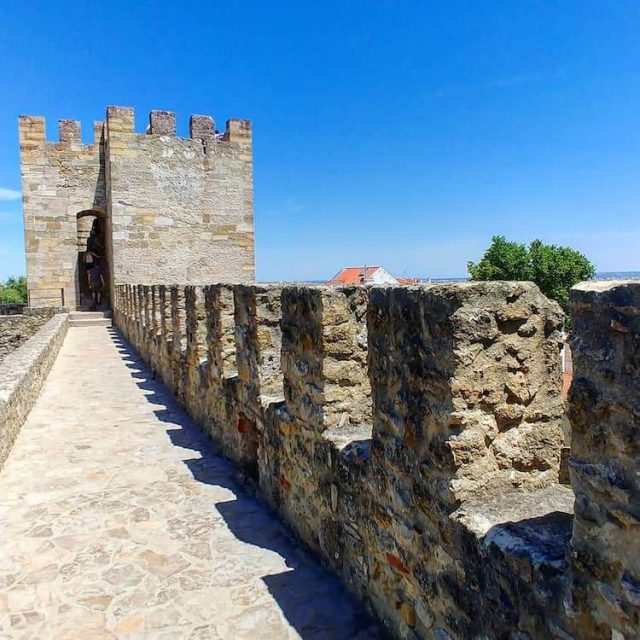
There are lots to see within the São Jorge Castle. Be sure not to leave without spending time with the drawing of how Lisbon appeared before the 1755 earthquake. Núcleo Museológico is where this is located, in the old palace buildings.
A fascinating look at a Lisbon that no longer exists, the faintly drawn picture depicts the old Moorish city walls and that the castle was the only building on the hill.
